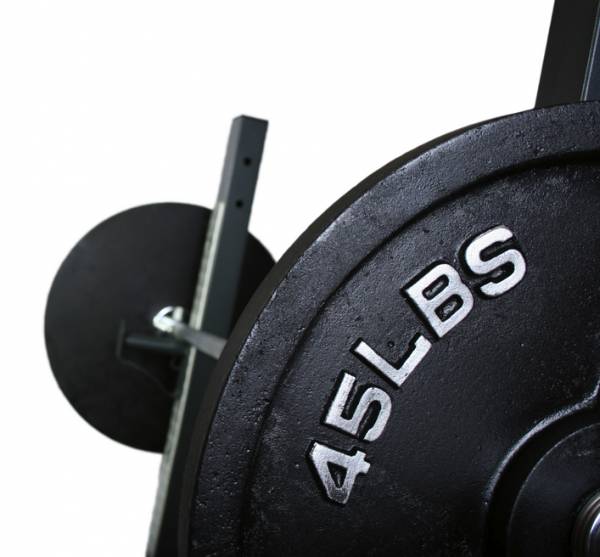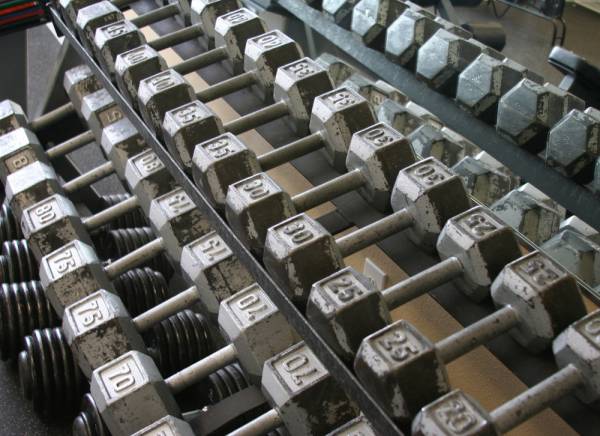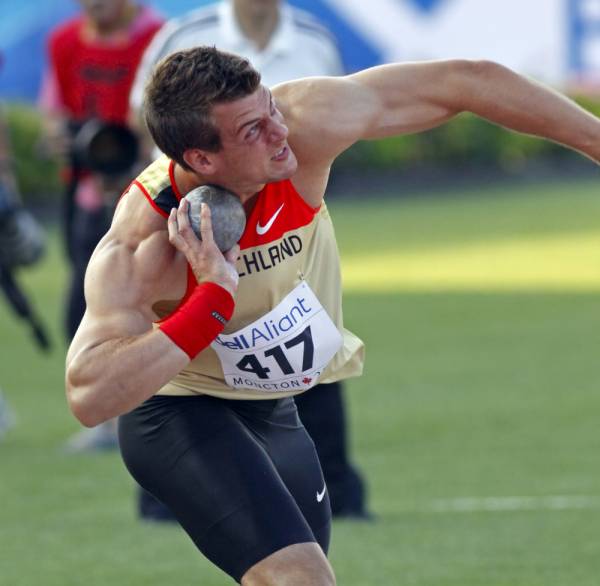The following are excerpts from Chapters 8 and 9 of Dan John’s book “Intervention: Course Corrections for the Athlete and Trainer,” available in print, ebook, and audio book.
You can also listen to these excerpts read by Dan John:
The following are excerpts from Chapters 8 and 9 of Dan John’s book “Intervention: Course Corrections for the Athlete and Trainer,” available in print, ebook, and audio book.
You can also listen to these excerpts read by Dan John:
I was recently asked what I consider my greatest contribution to the philosophy of strength and conditioning. I think I could offer the goblet squat, the Bulgarian goat-bag swing, the introduction of the slosh pipe, or even some of my more bizarre training ideas, like the One Lift a Day program.
But for philosophy, there’s no question: the Quadrants.
And, the truth behind the Quadrants – most of us live in QIII.
From Chapter 8: Fourth Question, Which Quadrant is Your Goal In?
Quadrant One
The person in this quadrant is learning a lot of qualities at a low level, like a high school physical education class. Most people only get one shot in life for this quadrant. This is why the importance of a quality PE program can’t be overemphasized. Here we learn the rules, the skills and the appreciation of games, sports and movement.
Quadrant Two
This quadrant houses the collision sports and occupations. A lot of qualities are needed, and the level of these qualities is quite high…amazingly high. This is football, rugby and Special Forces work. Sadly, most people plan to train in this quadrant, yet few actually should train in this manner.
Quadrant Three
This will sound odd, but here there’s a need for few qualities at a low level. Most people fit in quadrant three, but elite athletes are most often found here, too. An elite track athlete needs technique and strength. The strength levels are amazing, but not high when compared to someone who just lifts like an elite Olympic lifter. In this quadrant a person may need the absolute strength to deadlift 600 pounds. That’s a pretty big number, but let’s remember the world record is approaching twice that. In Quadrant Three, it’s all relative.
Quadrant Four
Here in quadrant four, we find the rarest of athletes. These are people who need very few qualities, but at the highest levels of human performance. Think 100-meter sprinters and Olympic lifters. Unless you are thinking of deadlifting 1,000 pounds or sprinting a 9.8 100-meter, you might not be here.
From Chapter 9: Quadrant Three – Where Most of Us Live
Managing Options
The problem with the quadrants grid is the interesting fact that nearly everyone thinks they are elite, collision-living quadrant twos. How do I know this? By far, the most common question I answer is, “Am I in Quadrant Two?”
These are questions from people who want to learn the Olympic lifts, but only do them once every two weeks and the other 13 days are filled with cardio-busting workouts, bodybuilding and circuit training. Trust me, putting the bar overhead with 400 is nothing like doing 95 pounds for 50 reps. I know, if you do the math (!!!), you will find that 400 for one is only 400 pounds of total work and 95 for 50 is like, well, a lot more, but, somehow, 400 still feels heavier.

I get email messages from people who want to lose some fat but spend time doing leaps onto boxes. I just don’t get that.
But then, I also get messages from people who watch a one-minute clip from my DVDs on YouTube and ask if I can just send the rest to them. I always wonder if they want me to cook and clean for them, too, because they think I am their mother.
Here, however, is the inescapable truth –
Most of us move from Quadrant One to Quadrant Three and stay there.
Sure, like me, you may have played a few years of football, Quadrant Two, but the bulk of life is spent here in Quadrant Three.
It’s my fault Quadrant Three is thought to be feeble. I often joke that in Quadrant Three “we don’t do much and we don’t do it very well.”
But I love Quadrant Three! I embrace it. Really, I love it. The greatest moment of clarity in my life came a few years ago when I had two full-time jobs – high school teacher and college instructor – two little girls at home, Kelly and Lindsay, and a wife always on the road. When I discovered at best all I could squeeze in was an hour of training each day, my lifting career exploded. Oddly, it is the same advice I gave my athletes, but there is no way I can possibly hear my own sound advice.
When you only have an hour to train, you have an opportunity to scrape away the excess and decide (remember, from the Latin root “to cut”) what is important to you. This is life-changing, and in my case was a life-illuminating moment. When I went through this exercise, I discovered that life in Quadrant Three is not about managing compromises. I was not in Quadrant Two trying to decide which of the hundreds of athletic qualities I should favor in order to gain a competitive advantage.
My life was not that complex. I only needed a handful of qualities to excel in my sport. My life was simple and I needed balance.
Quadrant Three is a wonderful place where balance means more than in any other quadrant. And this is where the confusion comes in. I use the yin and yang symbol to explain the dynamic relationship between the role of absolute strength and technical mastery, but this symbol is not perfect because it misses the dynamic nature of this relationship.
There is strength and technique. But it’s not 50/50 and the relationship is not static. Like a baby, you can’t unlink the DNA from the father or the mother. The genes are so integral that the child is truly 100/100 percent of each parent.

With Quadrant Three athletes, you must understand this: Technical work is strength work; strength is technical. The two qualities flow into and build on each other. Mastery in the weightroom carries over to the ring, which brings knowledge that carries back into the weightroom and then back out to the ring. A strong person you teach to throw the discus or a good thrower you make strong will never throw as far as the thrower who seeks to master both aspects as complements to the other.
This dynamic balance is why I love Quadrant Three.
For a fat loss client, the same holds true: The diet or food program must be linked tightly to the exercise program. (I argue strength here, of course.) In the same way, the strength program should inform the diet.
A good personal trainer should spend as much time reviewing the food journal as it takes for the client to learn that the food journal is the essential key to success. Without the food journal and the peek into the reality of the week ahead, training is a half-way measure. The food journal informs the training; the training will impact the food journal, and mastery of the two will lead to a lifetime of easy weight management.
The longer I spend in this game, the more I realize that Quadrant Three is not an “either…or” proposition. Oh, certainly, we know people who move from fad diet to fad diet and get some improvements. But the improvements rarely stick. And, we all know the modern cliché, you can’t outrun a bagel/doughnut/Twinkie/whatever.
It has to be “both…and.”
The problem with the strength, conditioning and fitness community today is that we have all fallen in love with the videos of NFL guys or ultimate fighters doing this and that and this in prepping for something. And I understand the appeal. Quadrant Two athletes are truly amazing spectacles of mastery and grace. Sometimes even I want to be that guy.
For most of us who are trying to scrub a few pounds of fat that has frowned over the belt or compete in a sport with a just a few qualities, we can get caught up in all of this fantastic stuff. And that’s the problem. As I have noted endlessly: “Everything works…for about six weeks!”
Then what?
One of my favorite articles sheds a light on how we can quickly go from simple to complex:
“Brian Oldfield, Al Feuerbach, Bruce Wilhelm and Sam Walker favored the quick lifts, while George Woods and Randy Matson leaned toward the strength lifts. … If there was any real consensus among the champion shot-putters, it was that a mixture of quick and strength lifts is effective.” ~Dave Davis, Track Technique, March and June 1974
The formula for success with these shot-putters is fairly simple, but you rarely see this recipe today. Here is the issue for any athlete, and in a moment I will expand this out to most people: One can achieve the highest levels of strength for throwing or sprinting or whatever through several routes.

These include:
- Olympic lifting
- Powerlifting
- Strongman Training
- Highland Games
- Power Bodybuilding
Frankly, they all work I’m sure blending these plans somehow would work better than just doing one, but that would be a tough experiment and probably would involve a time machine like the one I’m working on.
We can all agree that the quality the shot-putter needs is absolute strength. And now you see, these schools of strength training Davis was referring to are simply options. If there’s a key to understanding Quadrant Three, it is these two words: Everything works.
“Intervention: Course Corrections for the Athlete and Trainer” is available in print, ebook, and audio book.
You can also listen to these excerpts read by Dan John:
Photos courtesy of Shutterstock.






